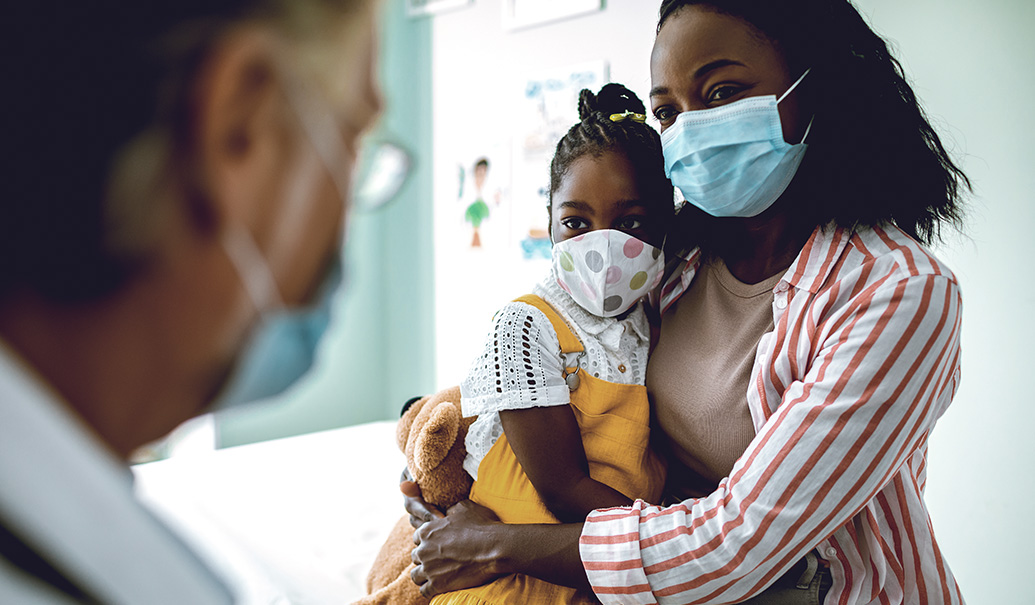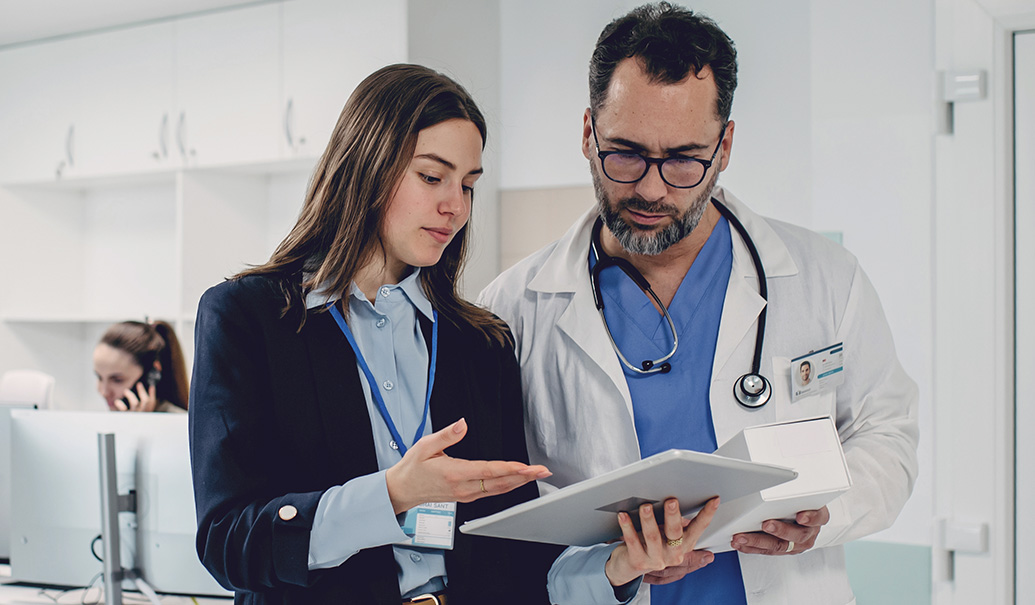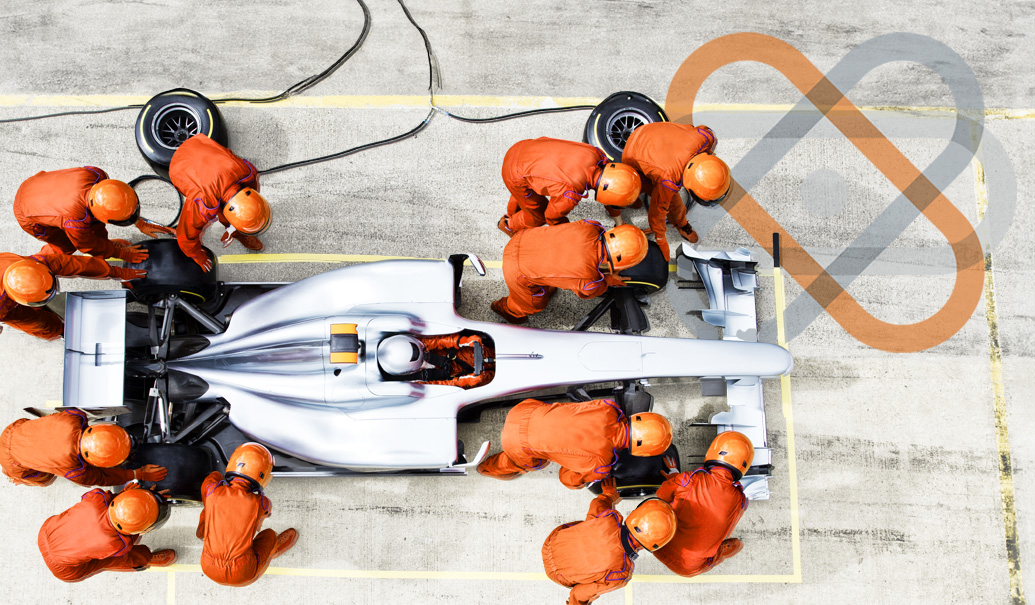Accelerating into the changes brought on by COVID-19 was a big theme at this year’s fully virtual Impact Summit. But how do you decide what changes to embrace, and how do you know when the time is right to press the accelerator? Getting an inside look at some of the trends that your peers are considering is a good place to start. We’ve pulled together a few excerpts from a fireside chat in which Larry Dobrow, executive editor of MM&M, interviewed Ulrich Otte, senior VP of finance and operations at Novo Nordisk, North America, and ZS’s Pratap Khedkar, managing principal and leader of the firm’s global biopharmaceutical practice.
Larry Dobrow: How has COVID-19 accelerated some of the changes happening across the life sciences industry, and transformed things once thought of as “nice-to-have” into the “must-have” category?
Pratap Khedkar: The pharma industry is looking at three things. The first is B-to-D, or business to doctors. Clearly 80% of pharma’s investment is in the sales force channel. That channel has been idle for several months now, and only about 10% to 15% of the face-to-face activity is back. We’re facing a serious rethink, and pharma is beginning to change this promotional channel to match what physicians, practices and customers expect.
The second big piece is B-to-B, or business to business. Organized institutions, payers and providers faced a big brunt of the crisis, but their attitudes have changed. They’re open to partnering with pharma. This has opened a window for pharma in an area which used to be “nice to have,” but it's become critical and a “must have” in the future.
The third piece is B-to-C, or business to consumer. A quarter of patients are reluctant to reactivate or are only willing to activate in the future through telehealth. How does pharma establish contact and reactivate these patients? How can pharma help the healthcare system take care of them? Those are the three vectors that have become must-haves. That's the pivot we’ll be watching over the next 12 to 18 months.
LD: What three activities are you doing to maximize the opportunity that's come with this disruption?
Ulrich Otte: Immediately out of the gate with COVID-19, our focus was to keep everybody safe and to make sure that our patients continue to have access to our medications. And we have been, so far, relatively successful on both. COVID-19 has accelerated changes and things that we had to do, and there are three things I’ll highlight in this regard. The first is hyper focus on growth opportunities. We have for a while been focusing on growth and a different way of managing our foundational business. The second one, like Pratap mentioned, is customer-centricity and more holistically serving the customer, the physicians, payers and patients and really dialing up the effort there. So, looking at how we organize ourselves and how we adjust our business to really drive that customer-centricity. The third element is making bold changes, things that we have maybe considered for a while. We’re using the opportunity to say now is the time for us to prepare for the future and make some of those forward-looking, bold changes.
Larry Dobrow: How difficult is it to balance those three different opportunities at the same time, obviously they're related, but they're also not related. How have you managed to do that?
UO: We’re changing because we want to modernize our company and be forward-looking, not because we have our back against the wall. And that’s a bit more challenging because we're going through a shift in the traditional reach and frequency model. We’re changing how we operate holistically across the patient engagement model and what’s personal, what’s not personal. Some of that is leading to a significant change in our FTE base and that's always tough to do. But it takes more effort when you do it because you believe that you will build a stronger company for the future versus in a situation where it's clear that your performance is challenged. Like John F. Kennedy once said, we believe that “the best time to repair the roof is when the sun is shining.”
Larry Dobrow: Has the appetite for change at all levels of the organization and alongside some of your partners increased or decreased?
UO: It's twofold because the understanding of a need for change is certainly there. At the same time, when we look at all our people, the challenges that families are facing across the country, the uncertainty on unemployment, schools not opening, a lot of concerns on the norms of social interactions that we have. On top of that uncertainty, you ask people to change and renew their focus. So, from a psychological perspective, that has been a significant challenge we have had to address head on as a leadership team and engage with the organization to bring them along. There’s an understanding that changes are coming.
Larry Dobrow: Pratap, among the many clients that ZS works with, whether in pharma, biotech or devices, do you sense that same appetite for change? Do you sense maybe a little weariness?
PK: I would say a third, a third, a third. What do I mean by that? About a third of the companies have said, "I want to change my perspective from capacity to capability." We have to do something about the channel and engaging physicians in the short term, but over the long term, it's not just about access capacity. It's about new capabilities along the lines of what Ulrich talked about, patient centricity, holistic customer engagement and reactivating the patient. About a third of these companies are saying, "Let's figure out two or three capabilities, maybe even one, that we need to build now because we don't have that full talent in-house."
Another third of companies are keeping the long-term in mind. These companies recognize that the crisis hasn’t yet affected some sectors like payers. What happens 18 months from now? What happens in 2022? The price pressure will come back. So, some of the older trends will probably rear their ugly heads. A third of the companies at the other end of the spectrum are saying, "Well, I wish the whole world would come back." And maybe it will. We're all waiting to get back to normality, so I think it's a manifestation of that, but the competitive advantage lies with those companies that stay ahead of the curve and use the disruption to accelerate into the curve.
Larry Dobrow: When you think about innovation, what are some of the other trends that you're looking at? What are some of the things that people should have their antennas tuned for?
PK: One big one is telehealth. One-quarter of patients, even when normality comes back, will want to engage virtually. Healthcare systems have to figure this out. And one of the amazing things, 100% of health system CEOs have identified having digital technology to engage with their patients as their No. 1 priority. They may be losing money on COVID-19, but they’re investing in that right now. When telehealth happens in a big way, what is something strategic that pharma can do that is different and important scale-wise? Not transactional stuff like a physician talking to a patient on the video screen. Can we get them the samples? That's a problem here and now that people are solving. What happens to telehealth long-term? Does the merger between Teladoc and Livongo come together and change the way medical devices, broadly speaking, technology in general, digital health in general, does it change at least for a section? Not everybody, don't get me wrong. The whole world is not changing, but a significant section of it is, and it's not something that pharma has the capabilities to support. So that's an important question on people's minds.
Larry Dobrow: What advice would you give life sciences professionals about accelerating change within their organizations?
UO: For us, the forward-looking aspect, and being bold and daring to invest has been leading the changes that we're going through now. And Pratap mentioned a number of the capabilities that we believe we need to strengthen in order to be competitive. And being very clear on the strategy. Are you changing because you are under tremendous pressure or are you changing because you have all these opportunities in front of you? You need to make purposeful investments and be very clear about what you need to do. COVID-19 has made it apparent that we need to be even sharper at our game. Figure out your strength, be clear on your strategy, be bold, and then go do it.
To view this video and more from this year’s Impact Summit, sign in or register here.














